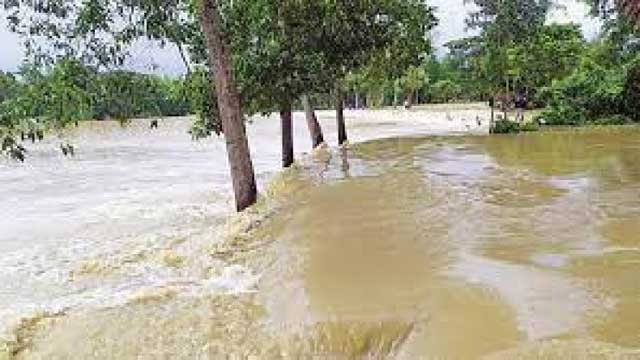The severe cyclonic storm Asani became a low after making landfall in Andhra Pradesh of India on Thursday and triggered flash flood fears in Bangladesh causing days of heavy rain.
The Flood Forecasting and Warning Centre forecast for a flash flood in the Teesta basin following heavy rain in its catchment upstream areas across the border, particularly on Thursday.
The Surma and Sarigowain rivers in north-eastern Bangladesh are likely to flood their banks in 24 hours, the FFWC said in its daily flood bulletin released in the afternoon, predicting heavy rain upstream over the next three days.
‘There is strong possibility of heavy rain upstream over the next three days, causing flash flooding in Teesta,’ said Arifuzzaman Bhuyan, executive engineer of the FFWC.
In 24 hours until 9:00am on Thursday, the FFWC flood bulletin said that the country’s highest rainfall of 193mm was recorded at Lalakhal of Sylhet, followed by 142mm rain recorded at Sheola, 136mm at Jaflong, 120mm at Sherpur and 115mm at Kanaighat.
There are 10 other stations run by the FFWC where over 500mm rain was recorded in the 24-hour reporting period.
In Meghalaya 180mm rain was recorded in the 24 hours until 9:00am on Thursday, the flood bulletin said, followed by 97mm of rainfall recorded at Gangtok of Sikkim and 37mm of rainfall at Shilchar of Assam.
Out of 109 river gauging stations, 66 stations recorded swelling in the rivers.
‘The problem is a western disturbance has arrived just after the cyclone amid a strong supply of moisture from the Bay of Bengal,’ meteorologist Abdul Mannan told New Age.
The overall weather condition is perfect for heavy rain to continue over the next three days.
‘Rainfall inside Bangladesh may reduce with time passing but will continue in upstream areas,’ he said.
The Bangladesh Meteorological Department in its afternoon weather bulletin valid for 6:00pm today predicted light to moderate rain at many places over six out of the eight divisions of the country.
The possibility of flooding is sure to get farmers in northern Bangladesh utterly worried for their main crop, boro, is yet to be harvested.
Boro harvest in the north usually begins in mid-May and takes at least a month to complete.
Parts of boro harvests in the north-eastern region have been ruined because of an early flood to the flash-flood prone region.
Flash flood submerged thousands of hectares of standing boro field in northern Bangladesh in April, prompting thousands of farmers to cut their paddy half-ripe.





